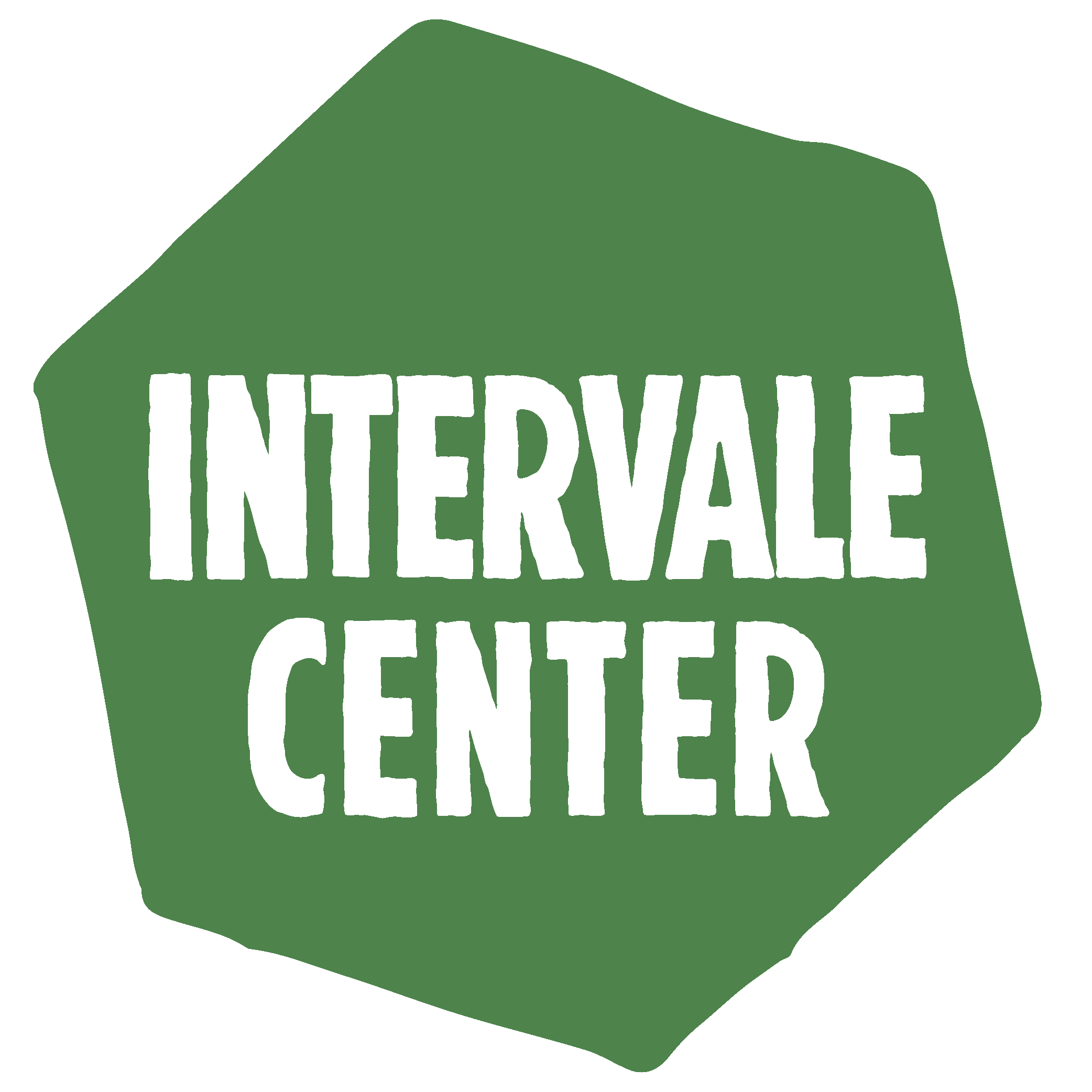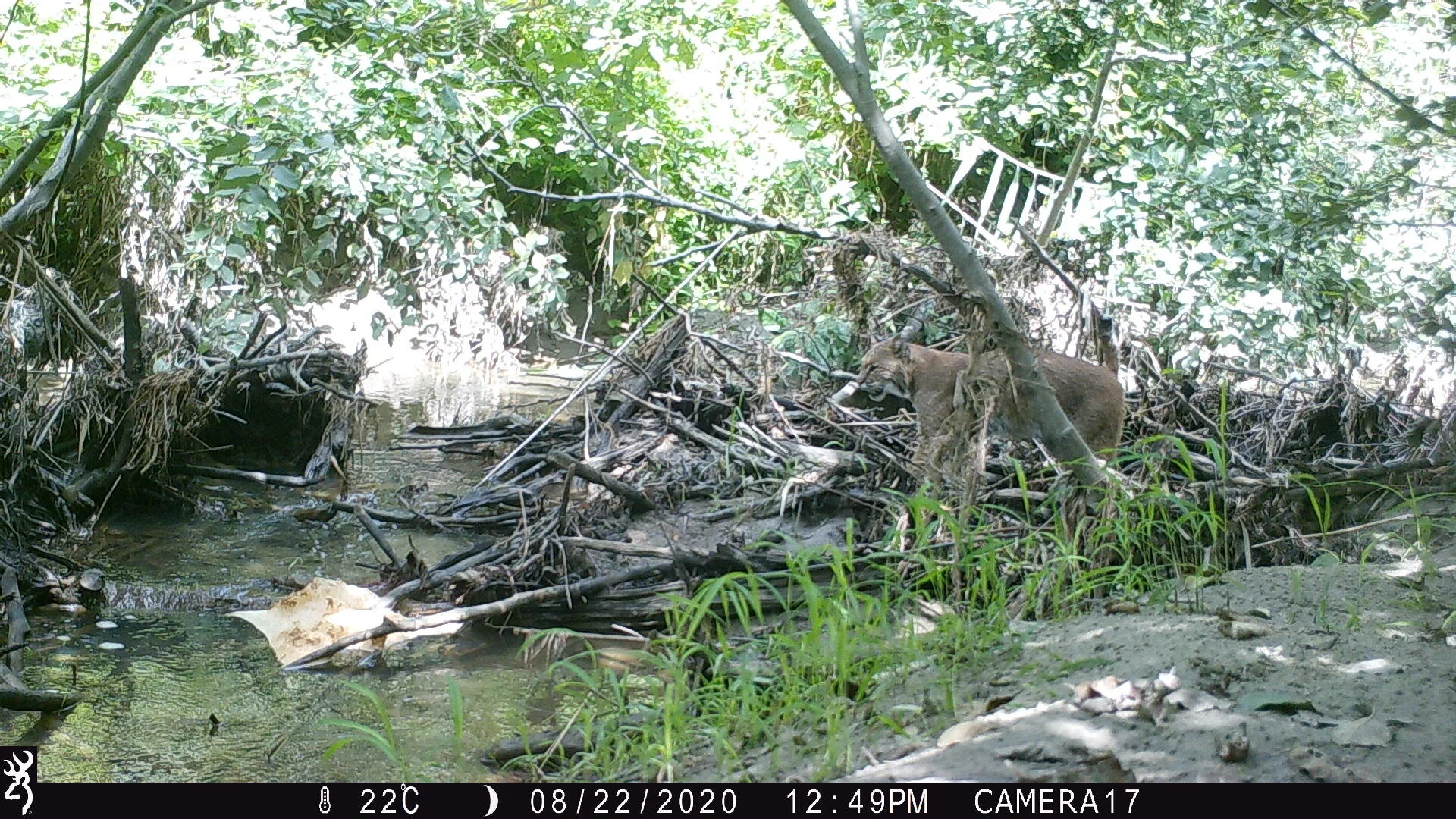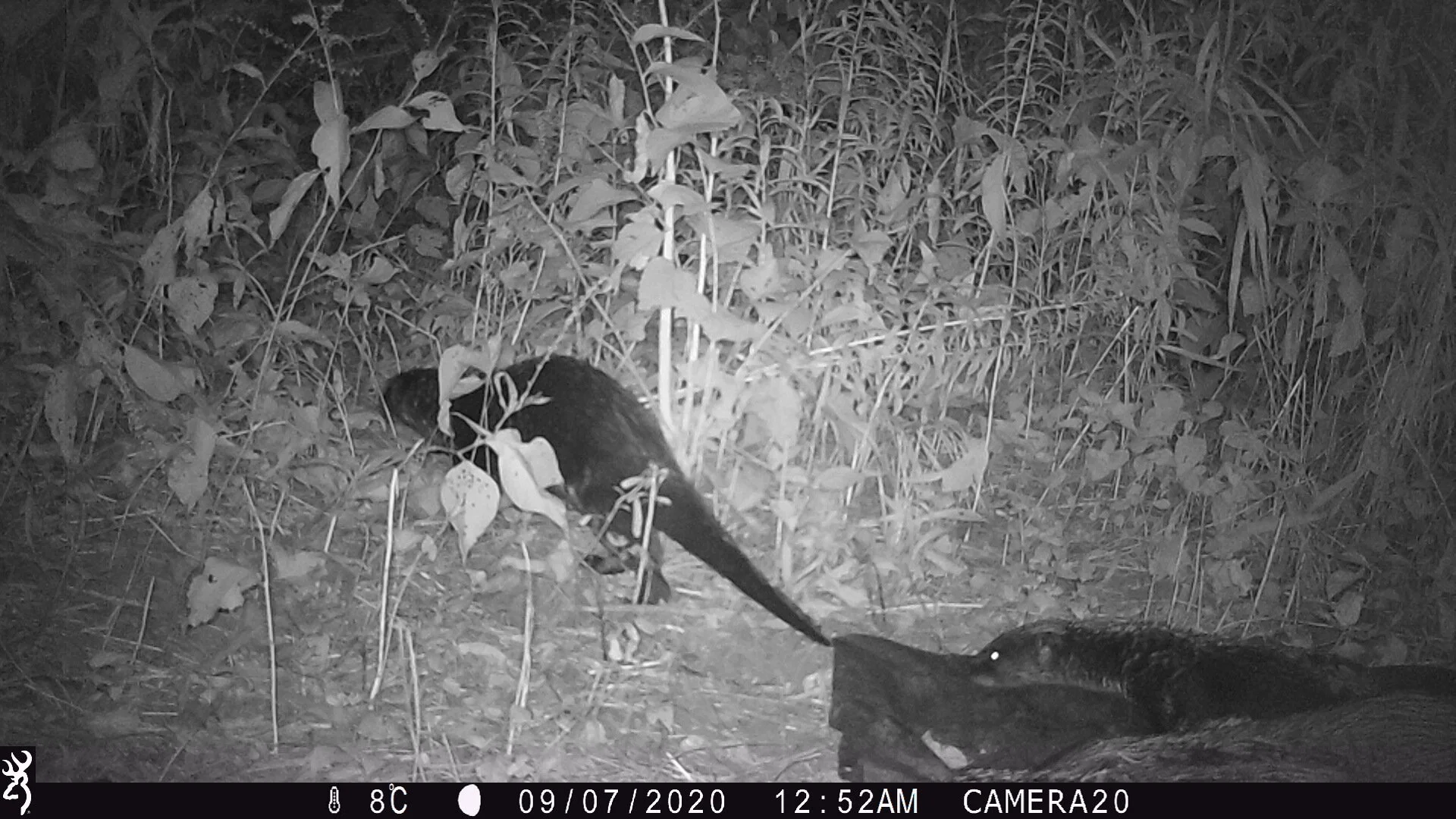Wildlife Cameras in the Intervale
True confession: in July, when I casually agreed to help with a camera trapping project, I had no idea what I was getting myself into. I thought I would hang a couple cameras at the Intervale and then phase out as the work got interesting and other, more experienced people took over.
Wow, was I wrong.
From July through September, I hung 25 cameras over 10 separate transects on both sides of the Winooski River. I had a rotating crew of masked, socially distant helpers – most of whom had more experience (and more responsibilities limiting their availability) than me. Together, we carefully selected places where we could collect images of animal behavior around a waterway, a hedgerow, a trail, or an agriculture field. We noted details about the habitat where we hung each camera, including the presence of food sources such as mast species or small animals, whether or not there were invasive plants, how disturbed/intact/restored the ecosystem was; and we noted specifics about the location of each camera, including the direction they were facing, their height from the ground, and their distance from a human-interest feature like a trail or a powerline. There were a lot of stakeholders, a lot of cameras, and a lot of questions, and we hoped that by tracking a lot of variables we could answer at least some of them.
So, we hung the cameras. And then we waited.
Every four weeks or so, I went – with or without company, depending on my crew’s availability – to check on the cameras and to swap out the batteries and the SD cards. Bringing the cards home to download the pictures was like all eight nights of Hannukah, plus Christmas morning, plus my birthday all rolled into one; that is to say, a real treat and I was floored that no one else wanted to do it. Maybe it’s because over the course of the last 7 months, we’ve amassed over 30 thousand photos and counting, but no matter. Going through them is like an all-natural Instagram but better, and I genuinely love it. My personal favorites are the chubby, playful raccoons. Or maybe it’s the unbothered skunks. No, the nonplussed opossums. Actually, wait, it’s the goofy, thieving groundhogs. I mean the regal beavers. The surprisingly skittish coyotes. The boss bobcats. The graceful deer. The slick otters… the, well, clearly, I can’t pick. They are all so cool.
Really, my favorite part of this was getting to see animals without them seeing me. They saw the camera, make no mistake -- almost every single animal looks directly at the lens at least once -- but then they go about their business. There is something extraordinary about watching the way an animal behaves when it’s not reacting to human presence. And, for obvious reasons, that’s something I would never have gotten to see without the cameras.
As the summer drifted into autumn, and more autumn, and more autumn, and finally winter, we pulled most of our cameras down and shifted to data analysis. I – with or without help, depending on my crew’s availability – am cataloging every image taken, and am uploading all our relevant photos to the Burlington Vermont Mammal Tracking Project on iNaturalist which is worth checking out to see what animals are where in the greater Burlington area. We are planning to present our findings at an April 8 event hosted by Vermont Land Trust and at the 2021 Northeast Natural History Conference, both of which are open to the public with registration.
Finally, be sure to check out the self-guided mammal tracking walk at the Intervale. Informational signage includes images of tracks and photos of animals, and QR codes will take you to our YouTube page where you can see videos of animals in action. And that is truly the best part.
-Lina Swislocki, Land Stewardship Research Associate





